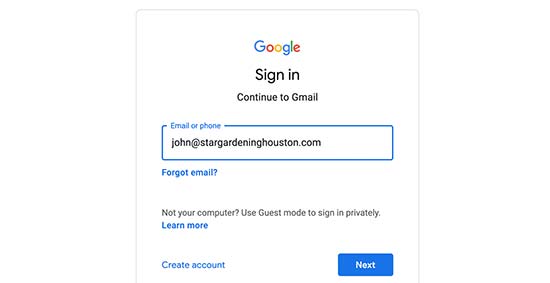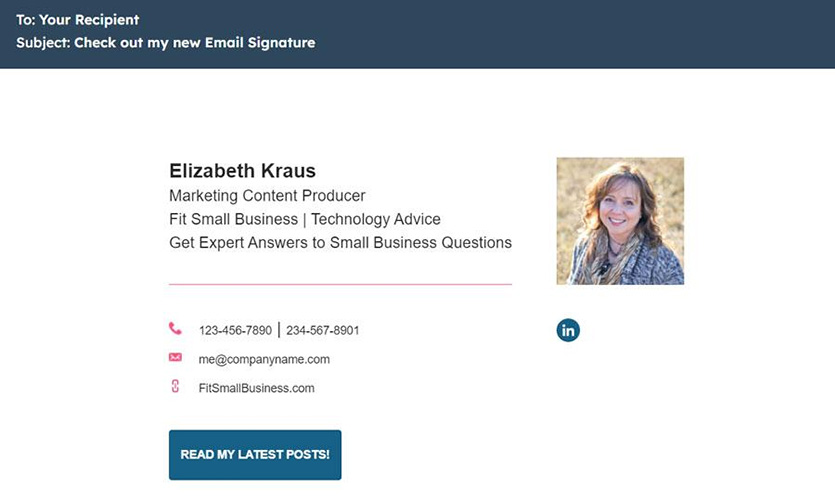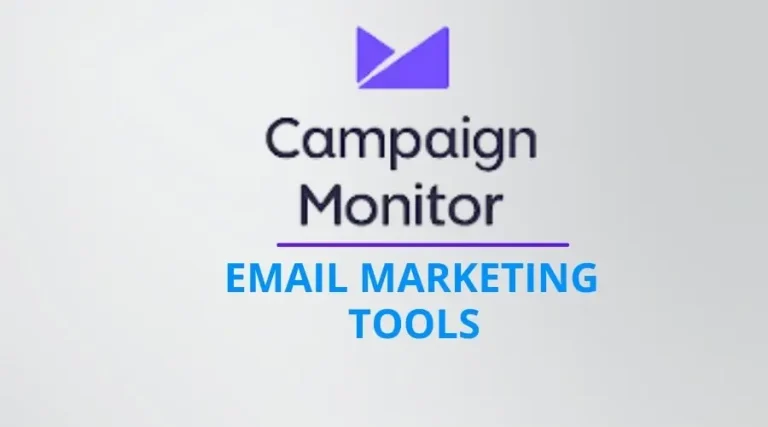To create a custom email address, you can choose a domain, sign up for an email hosting service, and set up the email address with your chosen domain. Creating a custom email address allows you to have a personalized and professional email address that represents your business or brand.
It also helps to establish credibility and brand recognition. Custom email addresses often use a unique domain name, such as yourname@yourdomain. com, instead of a generic email provider like Gmail or Yahoo. By following a few simple steps, you can easily create a custom email address tailored to your specific needs.
Choosing A Domain
When it comes to create a custom email address for your business or personal use, one of the most important steps is choose a domain. Your domain is the unique web address where your email will be hosted, and it plays a critical role in creating a professional and memorable email address. In this article, we will discuss the key factors to consider when selecting a domain, including understanding domain names, registering a domain, and selecting a domain registrar.
Understanding Domain Names
Before diving into the process of choosing a domain, it’s important to have a basic understanding of what domain names are. A domain name is essentially the address of your website or email, and it consists of two main parts: the top-level domain (TLD) and the second-level domain (SLD). The TLD is the extension that appears at the end of the domain, such as .com, .org, or .net. The SLD is the unique name that comes before the TLD and represents your brand or website.
In today’s digital landscape, there is a wide variety of TLD options available, ranging from the traditional options like .com and .net to newer ones like .xyz and .io. When choosing a TLD for your email address, it’s best to stick with the more well-known ones, as they tend to be more trusted and widely recognized by users.
Registering A Domain
Once you have a clear idea of the domain name you want to use, the next step is to register it. Registering a domain involves purchasing the rights to use that specific domain name for a predetermined period. This ensures that you have exclusive ownership and control over your chosen domain.
There are various domain registrars available where you can register your domain. These registrars act as intermediaries between you and the organization responsible for managing and allocating domain names. It’s crucial to choose a reputable registrar that offers competitive pricing, excellent customer support, and security features.
Selecting A Domain Registrar
When selecting a domain registrar, it’s important to consider a few key factors to ensure you make the right choice. First and foremost, check the pricing and renewal fees associated with the domain registration. You want to make sure that the registrar offers competitive prices and doesn’t charge exorbitant fees for renewing your domain.
Additionally, consider the customer support options provided by the registrar. Having reliable customer support can be crucial, especially if you run into any technical issues or need assistance with domain management. Look for registrars that offer 24/7 customer support through various channels like phone, email, or live chat.
Furthermore, it’s essential to assess the security measures offered by the registrar. Choose a registrar that prioritizes domain security and offers features like two-factor authentication and domain locking. These measures help protect your domain from unauthorized access and potential domain hijacking.
By carefully considering these factors, you can select a reliable and trustworthy domain registrar that meets your requirements and ensures a smooth domain registration process. Remember, choosing the right domain registrar is crucial, as it directly impacts the management and security of your custom email domain and email address.

Credit: mailslurp
Setting Up Email Hosting
Setting up email hosting (setting up a custom email) is an important step in creating a custom email address for your business or personal use. With a custom email address, you can portray a professional image and build trust with your recipients. To get started, you’ll need to choose an email hosting provider, set up email accounts, and configure DNS settings. Let’s dive into each of these steps in detail.
Choosing An Email Hosting Provider
When it comes to choosing an email hosting provider, you have several options to consider. It’s important to select a provider that offers reliable services, robust security features, and customizable options for your unique needs. Here are some popular email hosting providers to consider:
| Email Hosting Provider | Features |
| Google Workspace | Integration with other Google services, Generous storage space, Powerful anti-spam filters, Advanced collaboration tools |
| Microsoft 365 | Tight integration with Microsoft Office, Large mailbox storage, Enhanced security measures, Seamless synchronization across devices |
| Zoho Mail | Intuitive user interface, Ample storage capacity, Custom domain setup, Excellent privacy and security features |
Setting Up Email Accounts
Once you’ve chosen an email hosting provider, the next step is to set up email accounts for your domain. Most providers offer easy-to-follow instructions to create new email accounts. Generally, you’ll be asked to provide the following details:
- Your desired email address
- A secure password
- Personal details like name and contact information
After completing the account creation process, you’ll have access to your email account through a web-based interface or email clients like Outlook or Thunderbird.
Configuring Dns Settings
Configuring DNS settings is crucial for ensuring that your custom email address works properly. DNS (Domain Name System) is responsible for mapping domain names to IP addresses. To configure DNS settings, you’ll need to follow these steps:
- Login to your domain registrar or DNS management console
- Locate the DNS settings section
- Add or modify the required DNS records, including MX (Mail Exchange) records
- Save the changes and wait for DNS propagation, which may take up to 48 hours
Properly configuring DNS settings allows incoming emails to be directed to your chosen email hosting provider, ensuring seamless delivery to your custom email address.
Configuring Email Clients
Using A Web-based Email Client
Web-based email clients are convenient and accessible from any device with an internet connection. They allow you to manage your custom email address without the need for additional software. To get started with a web-based email client:
- Log in to your web hosting control panel or email hosting platform.
- Locate the email section and select the option to manage email accounts.
- Create a new email account by entering your desired custom email address and password.
- Save the changes and access your email account by visiting the web-based email client’s login page.
- Enter your custom email address and password to gain access to your inbox.
With a web-based email client, you can send, receive, forward, and organize your emails conveniently through a user-friendly web interface.
Setting Up Email On Desktop Clients
If you prefer using desktop applications like Microsoft Outlook or Apple Mail to manage your custom email address, you can configure these email clients to access your email. Follow these steps:
- Open your preferred email client on your computer.
- Go to the account settings or preferences section.
- Add a new email account and select the option to configure it manually.
- Enter your custom email address, password, and the incoming and outgoing mail server information provided by your email hosting provider.
- Complete the setup process by following the on-screen prompts.
Once configured, your desktop email client will synchronize with your custom email address, allowing you to send, receive, and manage emails directly from the application.
Configuring Email On Mobile Devices
With the increasing use of smartphones and tablets, it’s essential to have your custom email address set up on your mobile device. Here’s how you can configure it:
- Open the email application on your mobile device.
- Go to the account settings or preferences section.
- Add a new email account and select the option to configure it manually.
- Enter your custom email address, password, and the incoming and outgoing mail server information provided by your email hosting provider.
- Complete the setup process by following the on-screen prompts.
Once configured, you can access your custom email address on the go, staying connected with your professional correspondence and managing your emails effortlessly.

Credit:wpbeginner
Enhancing Email Security
Enhance the security of your emails by creating a custom email address. Safeguard your communication and establish a professional online presence with a unique and personalized email.
Enabling Two-factor Authentication
One of the most effective ways to enhance the security of your custom email address is by enabling two-factor authentication. Two-factor authentication adds an extra layer of protection by requiring an additional form of verification, typically in the form of a unique code sent to your mobile device, in addition to your password.
To enable two-factor authentication for your custom email address, follow these simple steps:
- Login to your email provider’s account settings.
- Navigate to the security or privacy section.
- Look for the two-factor authentication option and enable it.
- Follow the prompts to connect your mobile device and set up the authentication method of your choice (e.g., text message, email, authenticator app).
By enabling two-factor authentication, you significantly reduce the risk of unauthorized access to your email account, as even if someone manages to obtain your password, they will still need the additional verification code to gain access.
Using Email Encryption
Another vital step to enhance email security is by utilizing email encryption. Email encryption ensures that the content of your emails remains encrypted and unreadable to unauthorized individuals or hackers. This is particularly crucial when sharing sensitive information or valuable data via email.
To encrypt your emails, you have a few options:
- Use an email client or service that supports end-to-end encryption, such as ProtonMail or Tutanota.
- Install a browser extension or plugin that adds encryption capabilities to your current email provider.
- Manually encrypt important emails using software like GnuPG before sending them.
By utilizing email encryption, you can have peace of mind knowing that your confidential emails are protected and can only be accessed by the intended recipients.
Avoiding Common Security Pitfalls
While enabling two-factor authentication and utilizing email encryption are crucial for email security, it’s also essential to be aware of and avoid common security pitfalls that can compromise the safety of your custom email address.
Here are a few precautions you can take:
- Regularly update your email client or service to ensure you have the latest security patches and improvements.
- Choose strong, unique passwords and avoid using the same password for multiple accounts.
- Be cautious with email attachments and avoid opening or downloading files from unknown senders.
- Double-check email addresses before sending sensitive information to verify that you’re sending it to the correct recipient.
- Keep an eye out for phishing attempts and avoid clicking on suspicious links or providing personal information in response to unsolicited emails.
By following these simple guidelines, you can proactively protect your custom email address from potential security breaches and maintain the confidentiality of your communications.

Credit: fitsmallbusiness.com
Frequently Asked Questions Of How To Create A Custom Email Address
How Can I Create A Personalized Email Address?
To create a personalized email address, follow these steps:
1. Choose a domain name provider.
2. Register a domain name that suits your preferences.
3. Sign up for an email hosting service that connects your domain to an email platform.
4. Set up your personalized email address and choose any additional features you may need.
5. Start using your personalized email address for secure and professional communication.
How Can I Get A Custom Email Address For Free?
To get a custom email address for free, you can use various email service providers like Gmail, Yahoo, or Outlook. Simply sign up with these providers and follow their instructions to create a custom email address with your preferred username.
How Do I Create A Unique Email Address?
To create a unique email address, follow these steps:
1. Choose a unique username that reflects you or your brand.
2. Pick a secure email provider and sign up for an account.
3. Customize your email address by adding a domain name if available.
4. Ensure your email address is memorable and professional.
5. Keep your email address private and protect it from spam or phishing.
How Do I Create An Email Address For Myself Free?
To create a free email address for yourself, sign up with a reliable email service provider like Gmail or Yahoo Mail. Go to their website, click on the sign-up button, provide the required information, choose a unique username, create a strong password, and follow the prompts to complete the setup.
Conclusion
Creating a custom email address is a simple and effective way to enhance your online presence and establish credibility. By following the steps outlined in this blog post, you can easily set up a personalized email address that reflects your brand and makes a lasting impression on recipients.
Remember to choose a domain name that aligns with your business and keep your email secure to protect sensitive information. Get started today and unlock the potential of a custom email address for your professional communication needs.
Read also: A Guide To Essential Email Marketing Tools






